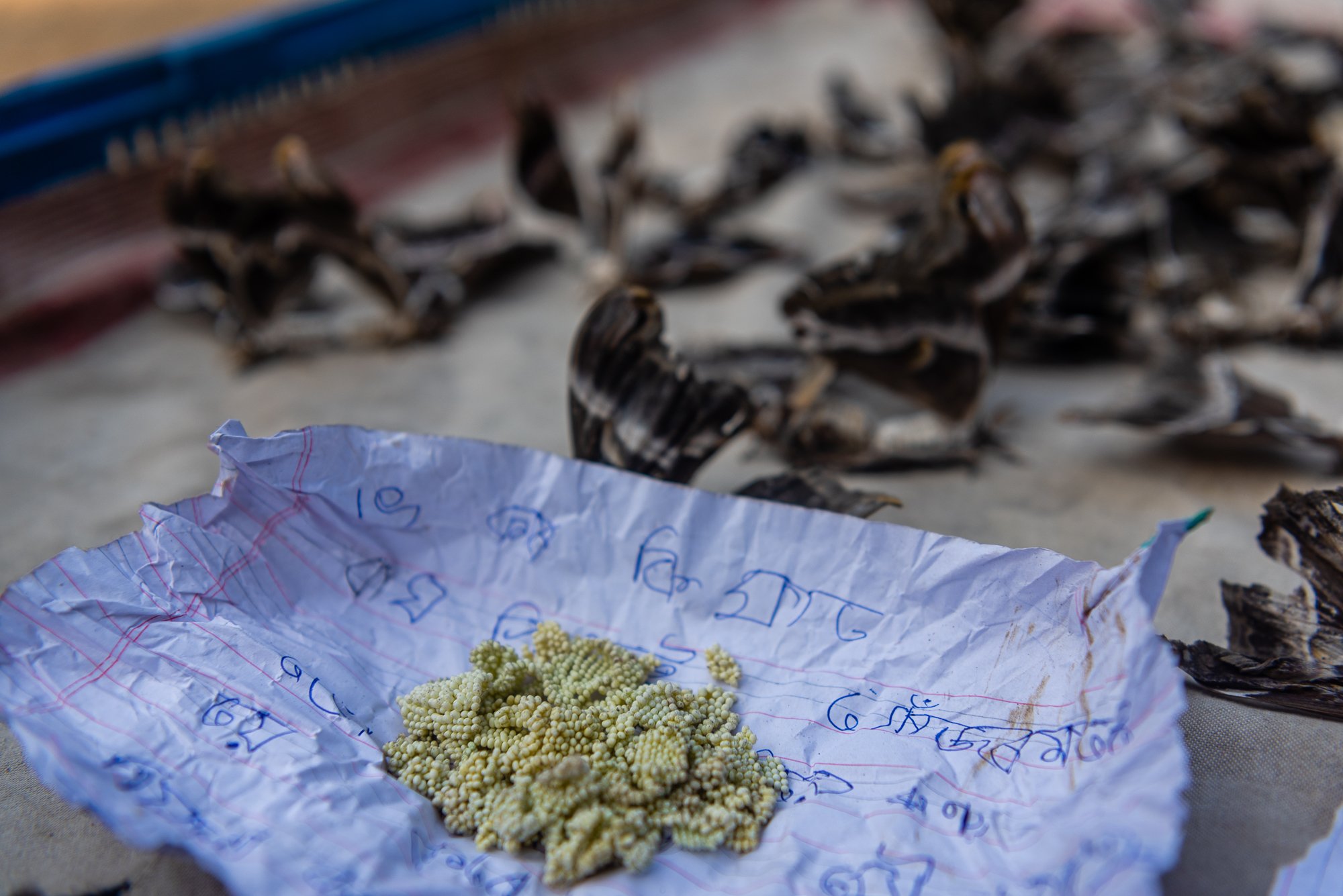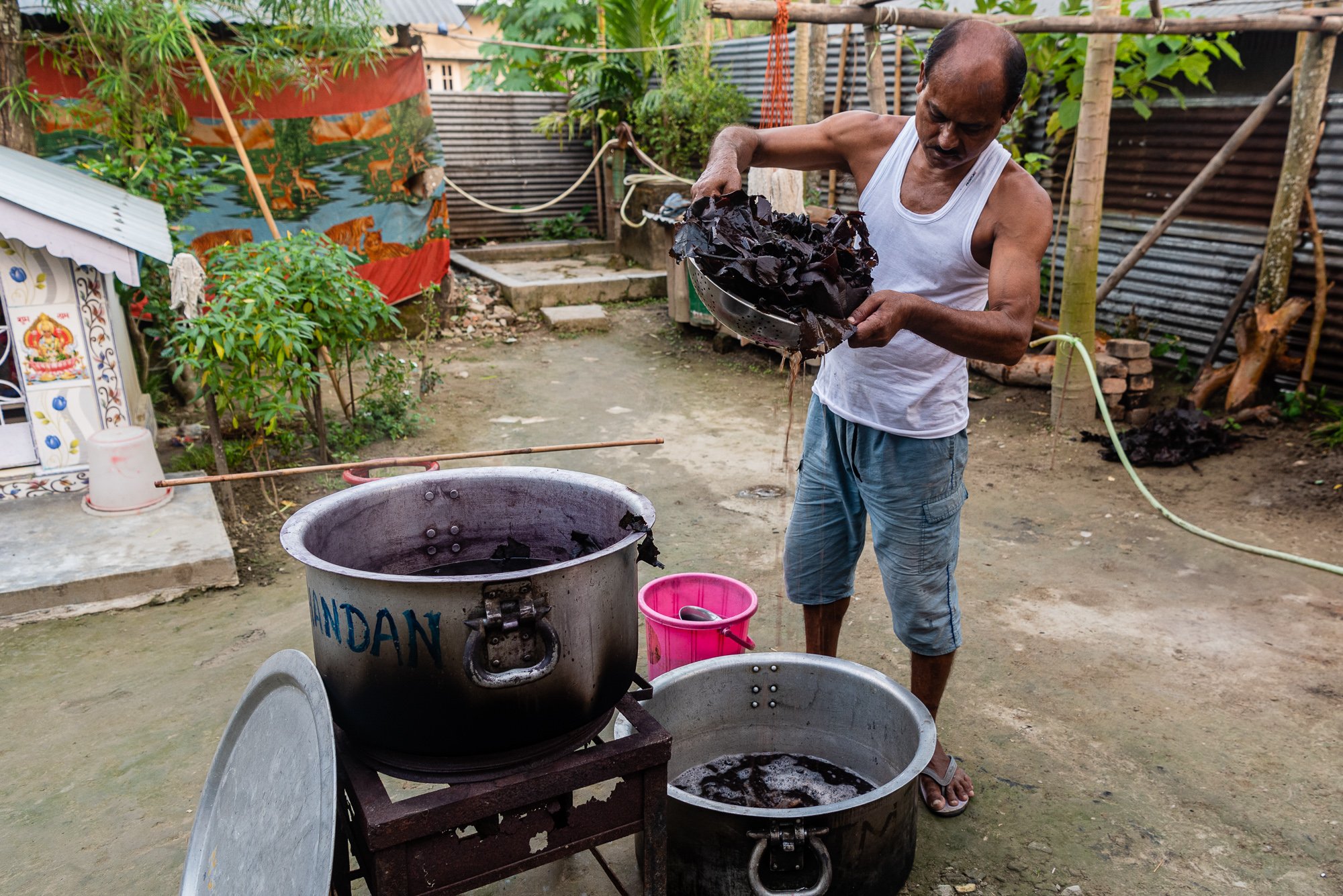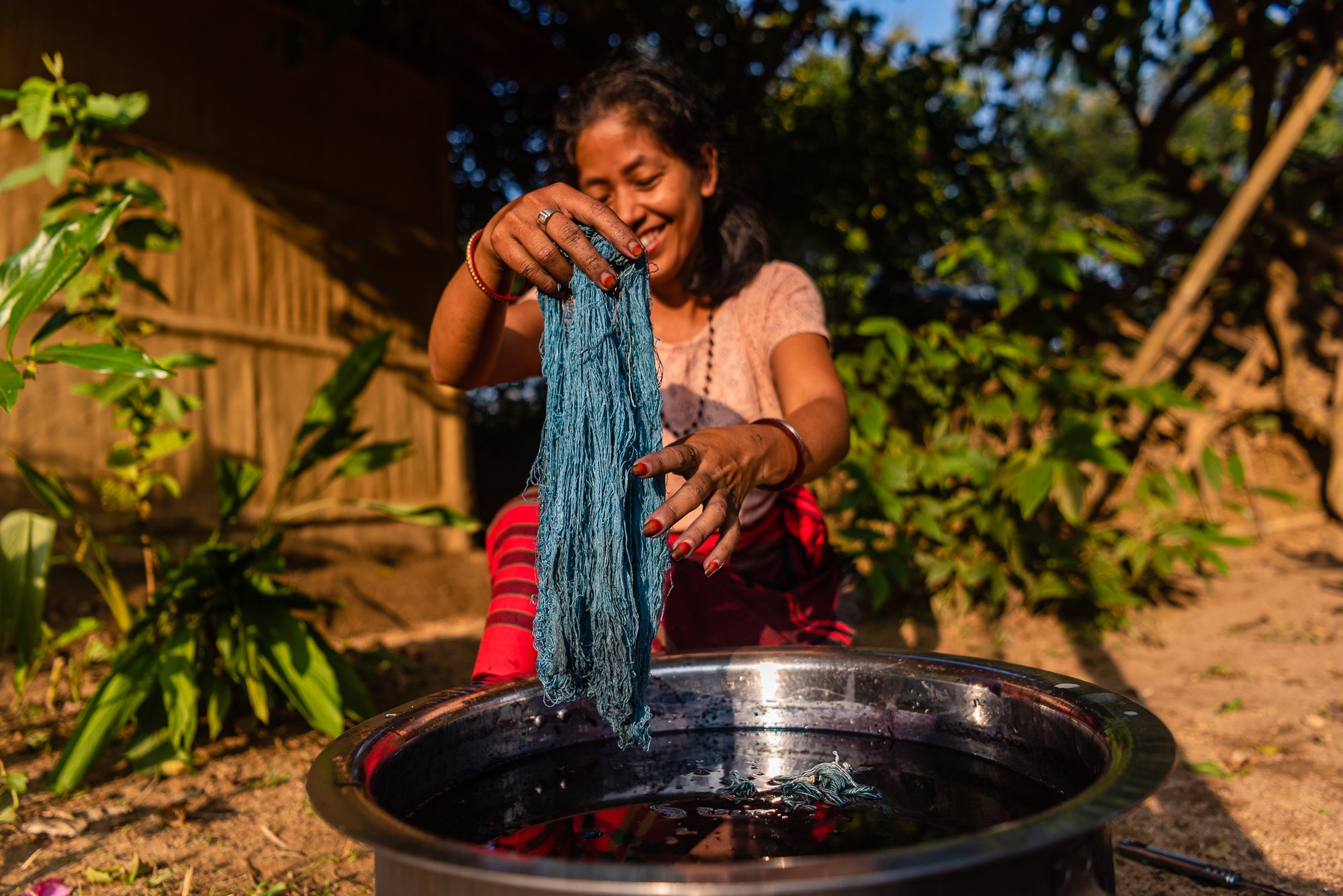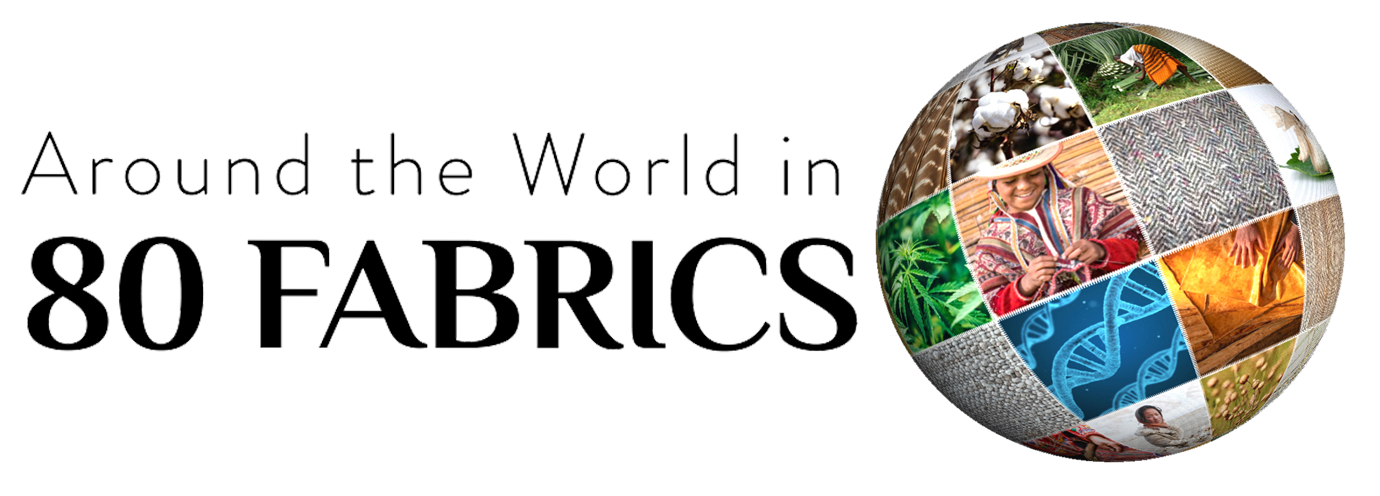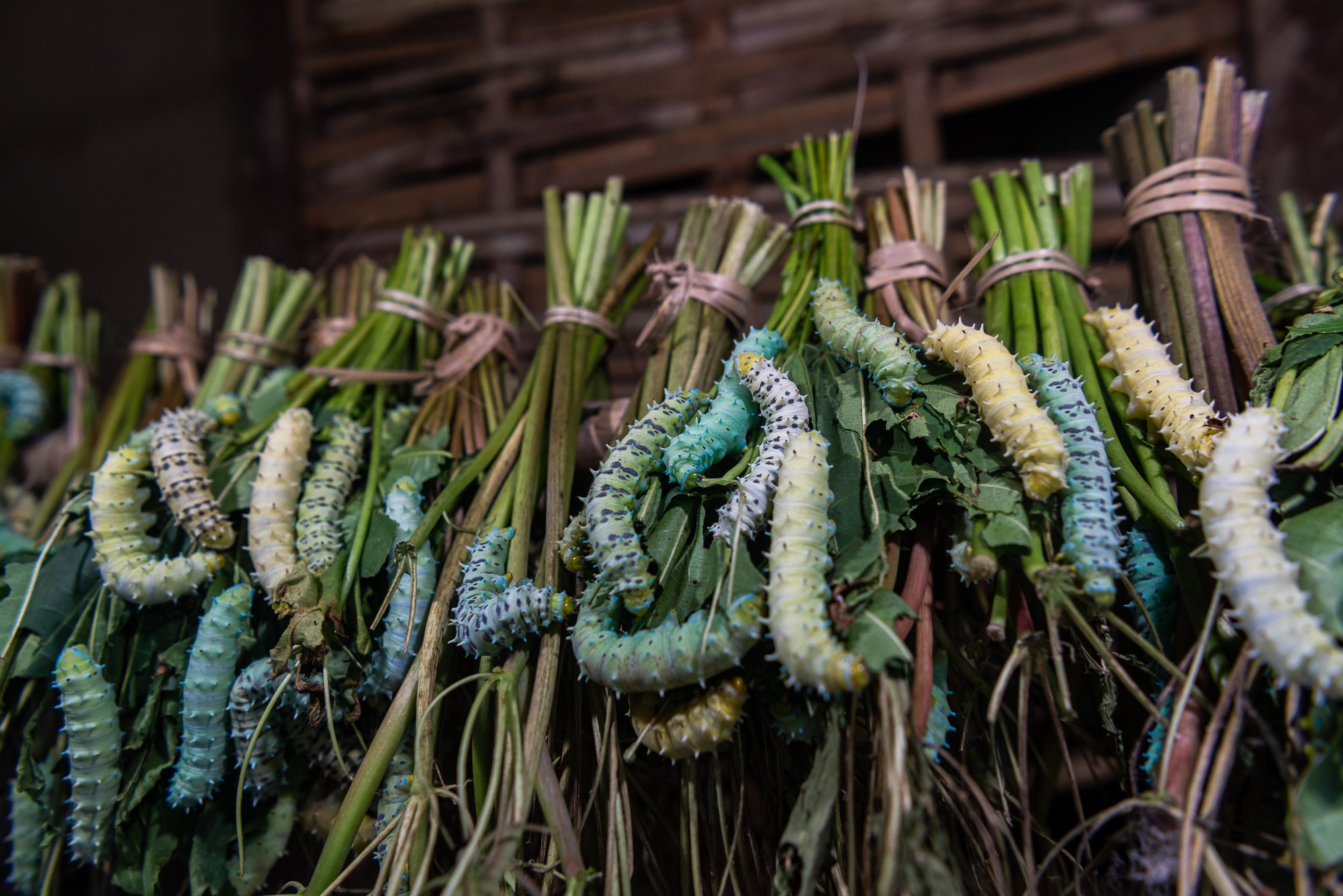
FABRIC: ERI (PEACE) SILK
Regions: Assam, India
Fabric Name:
Eri Peace (Ahimsa) silk
Species/Origin:
Samia ricini (Wm. Jones 1791) & Samia canningi (Hutton 1859)
Who made our fabric:
WE ARE KAL , Assam, India
Natural history and ecology:
We are KAL is a slow textile brand launched by a dedicated community of makers. Located in Ladakh and Assam the company works with handspun and hand-woven eri silk also known as peace or Ahimsa silk. This type of silk does not require the killing of the moth to extract the fiber. Instead, the silkworm caterpillars grow for 30 days continuously eating castor leaves. Once they reach their final size, the worms spin their cocoons which take 15 days and the moth is allowed to leave the cocoon and fly off.
What makes this so special:
In domestic silk production, the silkworms are boiled so they don't break through the silk fibers of the cocoon. The eri cocoons are open-mouthed which means they cannot be reeled into raw filament yarn but instead are spun like wool.
Natural Dyes in this fabric…
COMMON NAME: Cutch heartwood
SCIENTIFIC NAME: Acacia catechu
PART USED: Wood
POTENTIAL MEDICINAL USES:
antimicrobial,anti-inflammatory,antifungal, coagulant, antidiarrheal, astringent, and wound healing - has been used to treat obesity, diabetes, and maintain oral hygiene
COMMON NAME: Lac insect resin
SCIENTIFIC NAME: Laccifer Lacca and Kerria lacca
PART USED: Whole Insect
POTENTIAL MEDICINAL USES:
famous among traditional healers as an anti-obesity agent and its positive effects on the liver and gallbladder system, yet to be confirmed
COMMON NAME: Assam tea leaves
SCIENTIFIC NAME: Camellia sinensis
PART USED: Leaves
POTENTIAL MEDICINAL USES:
used as a stimulant, diuretic, astringent, coagulant, improve heart health, and promote digestion




